JHP Newsletter - 2007, No. 3, 11 July
I've been doing a lot more shooting here in Colorado lately and participated in a bat shoot in Arizona in June.
Travel: Local Colorado
At the beginning of April, I shot Mountain Bluebirds near Castlewood Canyon State Park. Ranchers have installed several nest boxes which attracts the birds and makes shooting them easier. The male in the image (below left) is feeding a female as part of their courtship behavior.
At the end of April and the beginning of May, I shot Red Fox in Prospect Park in Wheatridge. It's a long narrow, and largely natural, greenspace park along Clear Creek with a large population of Red Fox that is accustomed to humans nearby which makes them good photo subjects. The adult and kit (below right) are standing on top of their den.
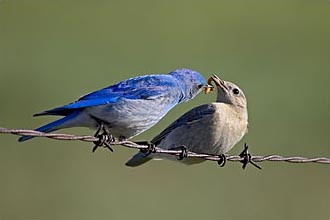
1/500 sec, f8, ISO 200
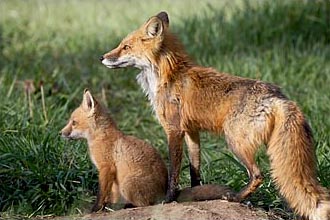
1/250 sec, f11, ISO 400
In early May, I went to two different local ponds to shoot waterfowl, and got some great shots of Wood Ducks, a species I hadn't shot before, at Belmar Historic Park (below).
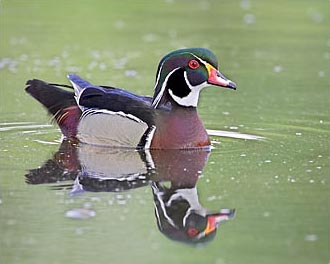
1/180 sec, f8, ISO 400
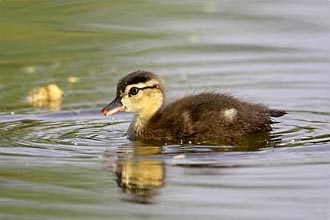
1/750 sec, f8, ISO 400
I returned to Castlewood Canyon State Park in late May and shot Western Bluebirds. The male (below left) and female adults were busy gathering food to take back to their young who were between six and ten days old. Before I left, I opened up a nest box and took some shots of the babies. Don't worry, it's safe to handle the babies when they're that age, and the adults won't abandon the nest.
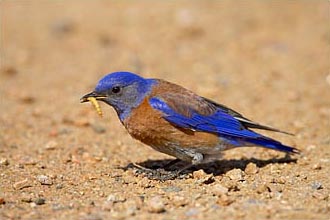
1/750 sec, f8, ISO 200
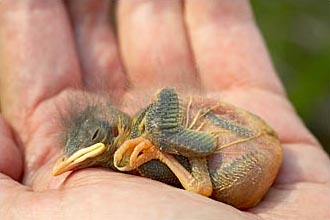
1/250 sec, f8, ISO 400
The most exciting shooting was at Pawnee National Grassland which is in the northeast corner of Colorado. I went primarily to shoot Swift Foxes, an endangered species, and a species that I hadn't seen or shot before. On the first trip, I saw some kits outside of two different dens, but by the time I had set up to shoot them, they had disappeared into the den and didn't come back out while I was waiting. On the second trip, as I was walking out to one of the dens I found on the first trip, I came across a Thirteen-Lined Ground squirrel (below left), a species I hadn't seen or shot before. The little guy was in a great location among some wildflowers, and I had a blast shooting it. The foxes at that den didn't come out, so I moved over to the second den, and the foxes there were most cooperative! :) The kits came out for a while and I got some nice portrait shots, but the most exciting shots were of an adult returning to the den (below right).
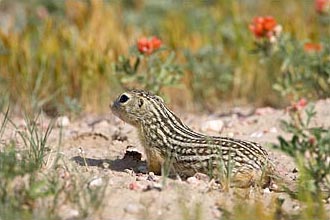
1/1000 sec, f8, ISO 200
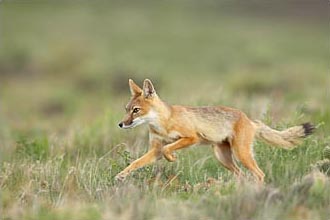
1/500 sec, f8, ISO 400
In early and late June I went up Mt. Evans. The road to the top is the highest automobile road in North America, going up to 14,260 ft (4346m). Mt. Evans is one of the best places in the US to shoot Mountain Goats, and I had never been up it before. I was primarily interested in shooting the baby Mountain Goats, but didn't see any on the first trip. I did get some nice head shots of an adult though (below left). The most exciting shots of that trip were of a White-Tailed Ptarmigan in mixed plumage (below center). Ptarmigans are all white in the winter to blend in with the snow and have a mottled brown back in the summer to blend in with foliage. On the second trip, I was able to get some nice shots of several different babies including the curious one in the shot below right.
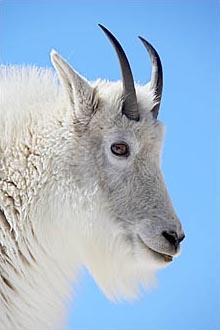
1/750 sec, f8, ISO 200
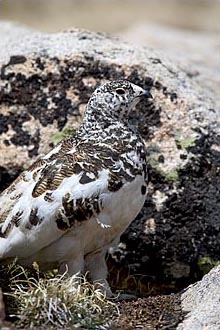
in Mixed Plumage
1/750 sec, f8, ISO 200
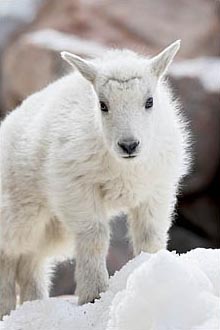
1/250 sec, f8, ISO 200
Travel: Bats in Arizona
In mid June, I participated in a four-day bat shoot in extreme southeastern Arizona. I'm sure many of you are wondering why I would do such a thing. Some because of the subject and some because of the timing. I think bats are neat, and the shoot was primarily to get flight shots of them, something not many people have. I'll agree that going to extreme southeastern Arizona in the middle of the summer is crazy. We had highs around 100°F (38°C), but fortunately did most of our shooting after dark when it was only in the 80s (around 30°C). We caught nighthawks and bats each night beginning at dusk, then shot them using a flight box. The flight box was about 12-15 ft (3.6-4.6m) long and tapered from about 6 ft (1.8m) square where the subjects were released to 1.5x2.25 ft (0.5x0.7m) where the subjects flew out through some laser-beam triggers (www.phototrap.com) to set off flashes (four regular hot-shoe flashes on their own stands) and make the exposure (the cameras were set to bulb shortly before the subject was released). The flight box was enclosed in a tent-like structure, so after the subject flew through the box, we'd capture it in the tent and send it through the flight box until it got tired and we'd release it. Most of the subjects would just land on the ground or the wall as soon as they got out of the flight box, but some of the bats would keep flying around and the handlers would have to chase them down. One time, a Hoary Bat came out of the flight box and landed on my headlamp! Now that's getting up close and personal with your subject!
We shot seven species of bats in flight and one additional species perched. The highlight was getting flight shots of a Hoary Bat (below left) because such shots of that species are very rare, and it was the first time the coordinators of the shoot had gotten one to fly through the flight box.
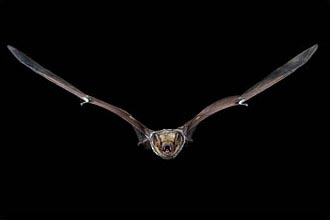
bulb, f22, ISO 200, flash
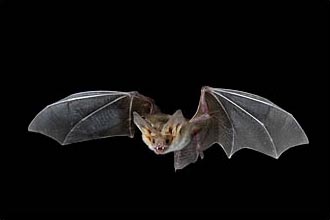
bulb, f22, ISO 200, flash
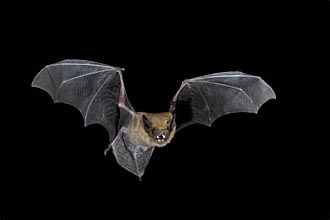
bulb, f19, ISO 200, flash
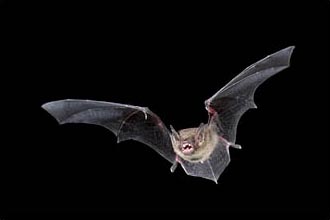
bulb, f22, ISO 200, flash
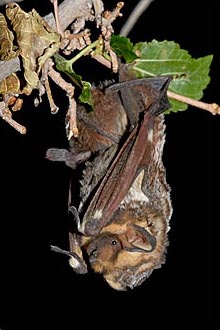
1/180 sec, f22, ISO 200, flash
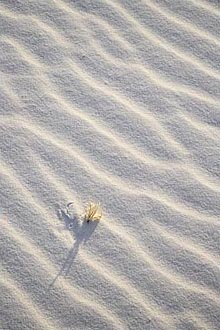
New Mexico
1/125 sec, f11, ISO 200
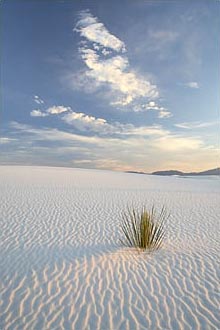
New Mexico
1/20 sec, f11, ISO 200
On the way back from Arizona, I stopped at White Sands National Monument in New Mexico. That's one of my favorite landscape destinations, and the weather was cooperative with some interesting clouds in the sky. Both of the images above (center and right) were taken shortly before sunset to accentuate the ripples in the sand.
Take care, and happy shooting.
— James
James Hager Photography :: www.jameshagerphoto.com




